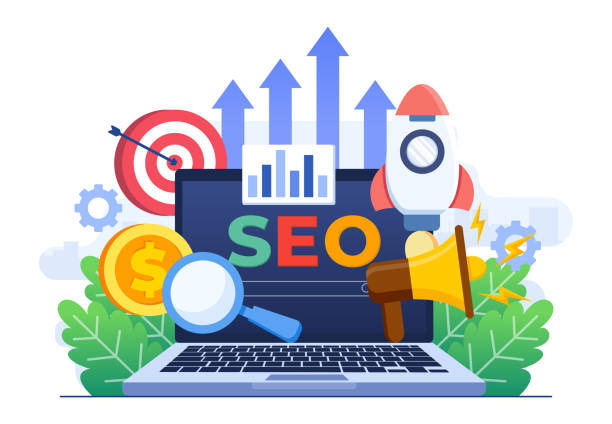How SEO and Conversion Rate Optimization Work Together in eCommerce

In the highly competitive world of eCommerce, businesses are constantly searching for ways to improve their online presence and drive more sales. Two critical strategies that work in tandem to achieve this are Search Engine Optimization (SEO) and Conversion Rate Optimization (CRO). While SEO focuses on driving organic traffic to your website, CRO aims to convert that traffic into paying customers. Understanding how these two strategies complement each other can significantly boost your e-commerce success.
What is SEO?
SEO (Search Engine Optimization) is optimizing a website to rank higher in search engine results pages (SERPs) for specific keywords. The goal is to attract more visitors through organic (unpaid) search results by making the website more visible and relevant to search engines like Google.
Critical components of SEO in eCommerce include:
- Keyword research: Identifying the terms and phrases your target audience is searching for.
- On-page optimization: Ensuring product pages, category pages, and blog posts contain optimized titles, meta descriptions, headers, and internal links.
- Technical SEO: Improving the site’s speed and mobile friendliness and ensuring proper indexing.
- Link building: Getting backlinks from authoritative sites builds credibility and improves search rankings.
A successful SEO strategy drives qualified Traffic to your eCommerce site, but getting users to visit is only half the battle.
What is CRO?
CRO (Conversion Rate Optimization) is the process of improving the user experience on your site to increase the percentage of visitors who take a desired action, such as making a purchase, signing up for a newsletter, or adding items to a cart.
Critical elements of CRO in eCommerce include:
- User experience (UX) design: Simplifying the navigation, improving page layout, and minimizing distractions to guide users through the buying process.
- A/B testing: Testing different versions of product pages, checkout processes, or calls to action (CTAs) to determine which leads to more conversions.
- Product page optimization: Enhancing product descriptions, improving product imagery, and displaying user reviews to build trust and encourage purchases.
- Personalization: Offering tailored recommendations, discounts, and messages based on user behavior or preferences.
While SEO brings visitors to your site, CRO ensures those visitors take meaningful action. In other words, SEO fills the funnel, and CRO optimizes it for maximum efficiency.
The Symbiotic Relationship Between SEO and CRO
SEO and CRO are often two distinct strategies, but they work best when aligned. Here’s how they complement each other in the eCommerce space:
High-Quality Traffic + Optimized User Experience = Sales
SEO ensures that the Traffic reaching your site is relevant, driving users who are genuinely interested in your products. CRO then converts that Traffic by optimizing the website for user experience and guiding customers through the purchase journey. If your SEO drives unqualified Traffic, your CRO efforts will be wasted; conversely, high Traffic with poor user experience will result in high bounce rates and missed opportunities.
Improved SEO Through Better UX
Search engines, notably Google, now place a high value on user experience. Factors such as page load speed, mobile usability, and bounce rate are considered when ranking websites. CRO improvements, such as faster load times and mobile-optimized designs, directly enhance these SEO-relevant metrics, leading to higher rankings and more organic Traffic.
Content Optimization
SEO relies on well-crafted content to attract users, but CRO ensures that content is persuasive enough to drive action. When writing product descriptions, blog posts, or category page content, balancing SEO keywords with CRO-focused copywriting helps attract search engines while engaging and converting visitors. Optimized content should be informative, easy to read, and structured to lead visitors to purchase.
Data-Driven Decision Making
Both SEO and CRO benefit from data analysis, but CRO heavily relies on user behavior insights like heatmaps, click-through rates (CTR), and scroll depth to make improvements. These insights can also be applied to SEO, for example, by identifying which keywords or product categories generate the most interest and engagement, allowing you to fine-tune your SEO strategy to attract more qualified Traffic.
Lowering Customer Acquisition Costs (CAC)
E-commerce businesses can lower their overall customer acquisition costs by optimizing both SEO and CRO. SEO generates ongoing, organic Traffic without needing paid ads, while CRO ensures that a higher percentage of that traffic results in sales. This symbiotic relationship allows businesses to achieve more conversions without spending more on customer acquisition.
Long-Term Results
SEO is a long-term investment that builds over time as search rankings improve, and CRO fine-tunes your website to adapt to changes in customer behavior. While paid advertising provides immediate results, SEO and CRO are more sustainable strategies that generate consistent Traffic and conversions long after the initial investment.
Best Practices for Aligning SEO and CRO in eCommerce
To ensure that SEO and CRO are working together effectively, consider these best practices:
- Focus on Intent-Based Keywords: In SEO, prioritize keywords with a high commercial intent. These keywords indicate the user is ready to buy, not just looking for information. Once you attract visitors through these keywords, use CRO techniques like clear CTAs and streamlined checkout processes to convert them.
- Optimize for Mobile: With more users shopping on mobile devices, SEO and CRO must prioritize mobile optimization. Google’s mobile-first indexing and mobile usability as a ranking factor make this essential for SEO, while a mobile-friendly user experience is critical for conversions.
- Improve Site Speed: Site speed impacts both SEO rankings and user experience. A slow site can hurt search visibility and increase bounce rates, directly affecting conversions. Implementing faster hosting, compressing images, and reducing unnecessary scripts can improve SEO and CRO metrics.
- Leverage Social Proof: Product reviews, testimonials, and user-generated content build trust with visitors and enhance SEO through keyword-rich content. Featuring reviews on product pages boosts conversions while providing valuable content for search engines to crawl.
- Run A/B Tests on Landing Pages: A/B testing is essential for CRO, but it can also provide valuable insights for SEO. For example, testing different headlines or meta descriptions can improve click-through rates (CTR) from search results, positively affecting your rankings.
Conclusion
In eCommerce, SEO and CRO are two sides of the same coin. While SEO brings qualified Traffic to your site, CRO ensures that this Traffic converts into sales. By aligning these two strategies, eCommerce businesses can improve search engine ranking and increase conversions. Understanding how SEO and CRO complement each other and using them in tandem will give your eCommerce store a competitive edge in the digital marketplace.
Hiring professional SEO services can provide significant benefits for eCommerce businesses by bringing expert knowledge and resources to your strategy. SEO agencies stay up-to-date with the latest algorithm changes, industry trends, and best practices, ensuring your website ranks higher and remains competitive in search results. They can perform in-depth keyword research, technical optimizations, and link-building efforts that may be difficult to handle in-house. Additionally, professional SEO services can save time and allow businesses to focus on other critical areas, while experts work on driving organic traffic and improving conversion rates, ultimately increasing sales and reducing customer acquisition costs.
In short, a well-executed SEO strategy gets people through the door, and an optimized CRO strategy ensures they don’t leave empty-handed.



